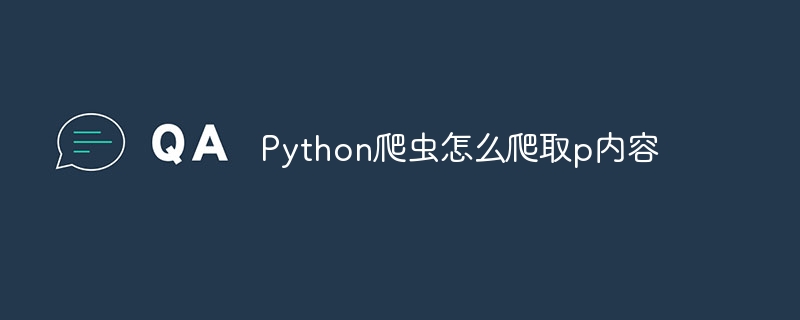使用Python爬虫爬取<p>内容的方法:导入必要的包,如requests和BeautifulSoup。获取网页内容并解析HTML。定位<p>元素。提取<p>内容并打印。

利用Python爬虫爬取<p>内容
如何爬取<p>内容?
使用Python爬虫爬取<p>内容需要遵循以下步骤:
1. 导入必要的包
立即学习“Python免费学习笔记(深入)”;
<code class="python">import requests from bs4 import BeautifulSoup</code>
2. 获取网页内容
<code class="python">url = 'https://www.example.com/' response = requests.get(url) html_content = response.text</code>
3. 解析HTML内容
<code class="python">soup = BeautifulSoup(html_content, 'html.parser')</code>
4. 定位<p>元素
<code class="python">p_tags = soup.find_all('p')</code>5. 提取<p>内容
<code class="python">for p_tag in p_tags:
print(p_tag.text)</code>详细示例:
<code class="python">import requests
from bs4 import BeautifulSoup
url = 'https://www.example.com/'
response = requests.get(url)
html_content = response.text
soup = BeautifulSoup(html_content, 'html.parser')
p_tags = soup.find_all('p')
for p_tag in p_tags:
print(p_tag.text)</code>此示例将打印出页面中所有<p>元素的内容。
以上就是Python爬虫怎么爬取p内容的详细内容,更多请关注php中文网其它相关文章!

每个人都需要一台速度更快、更稳定的 PC。随着时间的推移,垃圾文件、旧注册表数据和不必要的后台进程会占用资源并降低性能。幸运的是,许多工具可以让 Windows 保持平稳运行。

Copyright 2014-2025 https://www.php.cn/ All Rights Reserved | php.cn | 湘ICP备2023035733号